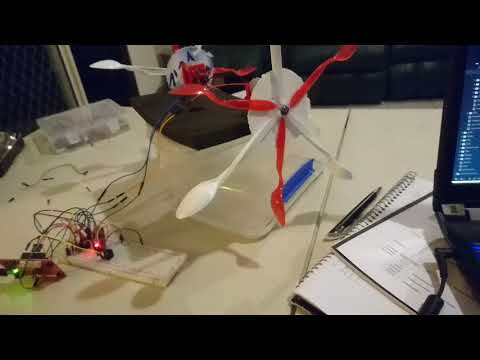Bluetooth boat made for Microprocessor Techniques 2303ENG
Using a Tiva C Series TM4C123G
- Bluetooth Control
- Dual Motor paddle
- Internal Timer
- Buzzer horn
- Ultrasonic Sensor
- Autonomous Control
The ultrasonic sensor did not want to register the distance between the boat and object. (Programming Error)

| Picture |
Description |
 |
The paddles are made of bent plastic spoons that were hot glued onto a round plastic cutout. The spoons were bent using a hair dryer but a heat gun would have done a better job of it. The round cutout that holds everything is placed onto an axle connected to the motor. The hot glue seems to hold everything on very well and I have not had any issues with it. |
 |
Two 3V motors are geared down to move the paddles independently. They are held on top of the raft with the use of hot glue. The motors are controlled by a single L293DNE motor controller. They are rated from 4.4V and up but still work with 3.3V. |
 |
The raft is a plastic tupperware container with a bit of foam hot glued to the lid. This foam serves to get the paddles further away from the container so that they do not collide with the raft. A hole has been cut into the lid to allow the wires to pass through. |
 |
A bluetooth slave takes everything coming from the computer and passes it to the Tiva. The bluetooth is using a baud rate of 9600 and has no parity, and one stop bit. A buzzer can be turned on and off while the boat is running. This is used as a makeshift horn. |
In computer/control.py line 13 change NORMAL to the name of your bluetooth device.
13| if bluetooth.lookup_name( i ) == "NORMAL":
When controling with bluetooth there is a latency between when a buttton is pressed and when it gets executed on the motors. This lag is due to the way bluetooth handles data and requests. A radio system would work far better.

